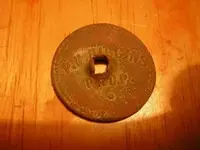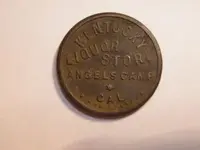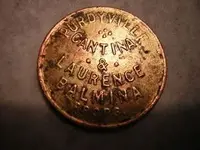No, those are 1976 prices. And, in my opinion, since the trade token market is relatively new and unestablished, pricing guides for them aren't worth the paper they are printed on. At best they are guesses, since the person putting the price guide together probably has never seen more than a couple of the rarer tokens change hands. Plus nobody knows how many of each token were made or how many have survived. And, because of the laws of supply and demand, the number of collectors for a certain token and the competition among those collectors drives prices. Most trade token collectors collect from a specific area, be it a state or a region. For example a California token collector may also collect Nevada ones. Then, within that area, they may collect all denominations, merchants, and varieties, or simply collect one of a town. In a large state like CA, few collectors go for all tokens, and if they are a one per town collector, Angels or Angels Camp (I suppose some might consider them two separate towns) would be relatively easy to get because there are over 60 varieties listed. Purdyville, however, only has the two types shown in the book and both of them were scarce enough at the time to be shown as $20. Long story, but to make it shorter, I'd say if you put that token on your state's well-known auction site, an x factor of 10 would be conservative.
John in ID







